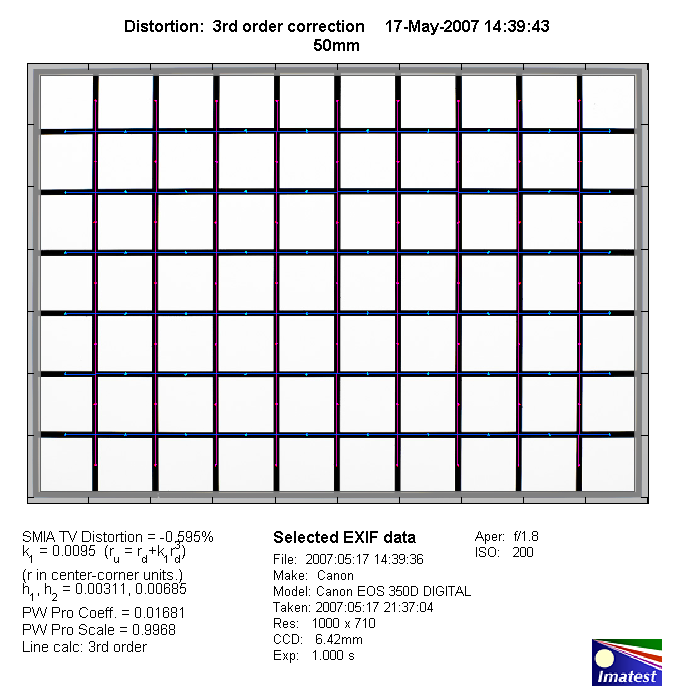|
Leica Summilux-R 50mm f/1.4 (via adapter on Canon EOS) Review / Test Report - Analysis |
|
Lens Reviews -
Canon EOS (APS-C)
|
|
Page 2 of 3
Distortion
Typical for standard/normal lenses the Leica exhibits only a minor degree of
barrel distortion (~0.6%) - nothing to worry about under field conditions.

The chart above has a real-world size of about 120x80cm.
Vignetting
The Leica is a full format lens but regarding its ultra-large max. aperture
it still shows some vignetting (0.76EV) at f/1.4 on an APS-C DSLR.
However, the problem is already negligible from f/2 onwards.

MTF (resolution)
The Leica shows an impressive although not an unique resolution characteristic in the
MTF lab. The center resolution is excellent throughout the tested aperture range. The
border performance is good at large aperture but it increases steadily towards medium
aperture till reaching an excellent peak performance at f/5.6.
The contrast performance seems to be unusually high even at large apertures - the
Zeiss ZF 50mm f/1.4 is quite a bit softer at f/1.4 for instance.
Please note that the MTF results are not directly comparable across the different systems!
Below is a simplified summary of the formal findings. The chart shows line widths per picture height (LW/PH) which can be taken as a measure for sharpness.
If you want to know more about the MTF50 figures you may check out the corresponding Imatest Explanations
Chromatic Aberrations (CAs)
Lateral chromatic aberrations (color shadows at harsh contrast transitions) aren't
a strong feature of the Leica (similar to the Canon EF 50mm f/1.2 USM L). At wide-open
aperture the problem is quite well controlled but from f/2.8 CAs reach an average
width of around 1.2px at the image borders. This can be visible at times.

You may be able to spot some Longitudinal Chromatic Aberrations (LoCA) at large apertures.
These are greenish to reddish out-of-focus halos near the in and out-of-focus transitions.
This is normal for an ultra-large aperture lens.
|